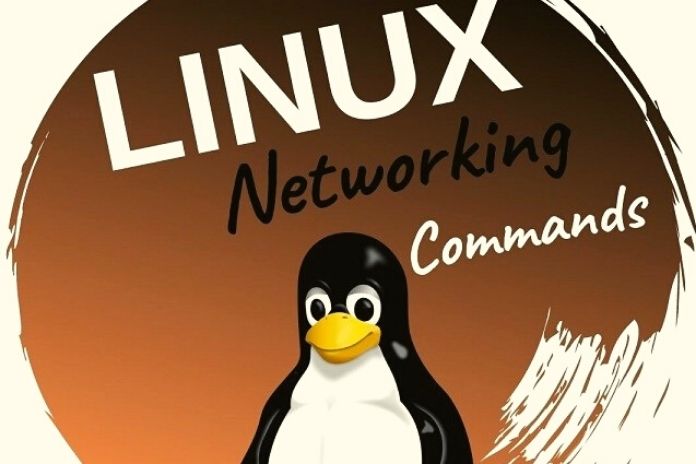A brief guide to using some of the leading Linux commands to manage network interfaces and proper communication between systems. When working with a Linux system, knowing some useful commands to verify and possibly modify the network configuration is essential. Linux kernel-based devices are ubiquitous – within data centers and in the network infrastructures of businesses of any size.
The vast majority of products for the Internet of Things (IoT) are based on Linux and are increasingly used for the intelligent home and industrial level. The “fundamental order” to meditate on the organization arrangement of Linux frameworks is IP which has since a long time ago supplanted ifconfig, course, and arp (all “deplored”). By composing the order IP address show, it is possible to get the rundown of organization interfaces being used and the IP address (private or public) related with it for every one of them.
The IP address utilized by every point of interaction is shown to one side of the net (IPv4) passage, while to one side of inet6, you can peruse any IPv6 address allowed. The points of interaction that compare to Ethernet cards, physical or virtual (on account of cloud servers), are named eth0, eth1, eth2. Close to connect/ether, it is feasible to peruse the related MAC address for every one of them. Utilizing the IP address show dev eth0 order, you can get data about the arrangement of the predetermined organization interface (for this situation, eth0 ).
Close to express, the words UP and DOWN demonstrate whether or not the connection point is dynamic. The order IP connect set eth0 up permits you to empower the eth0 network interface while composing IP interface set eth0 down, you can hinder a similar point of interaction. To eliminate an IP from a solitary organization interface, you can utilize the accompanying order:
- IP address del IP_DA_REMOVERE/SUBNET_MASK dev eth0. Indicating/24 as the netmask will determine a subnet cover 255.255.255.0.
- To relate an IP to the organization interface, you can utilize the order: IP address add IP_TO_REMOVERE/SUBNET_MASK dev eth0
- To make the IP address change persisting, on Debian/Ubuntu systems, you can type the going with: nano, etc/network/interfaces
- Then, at that point, change the design record along these lines to what in particular is displayed in the figure: In the model, auto eth0 and auto eth1 require the two organization points of interaction to be naturally instated when the working framework begins.
- With face INTERFACE_NAME, it is static. You guarantee that the predefined IP address is statically appointed and spontaneous to a DHCP server (another way, DHCP would have been indicated rather than fixed).
Different boundaries permit you to characterize the subnet cover, door, and DNS server to utilize. Changes to the document should be put away by squeezing the key blend CTRL + O then CTRL + X to close the word processor. With a Linux dissemination like CentOS 8 and RHEL 8, you can utilize nature to get to the design screen. By picking the top choice Edit an association, you can change the design of all the organization interfaces being used with the chance of adding and eliminating them.
The arrangement of each organization point of interaction is put away in the/and so on/sysconfig/network-scripts registry (type ls/and so on/sysconfig/network-scripts for the names of the setup records). By composing nano/and so on/sysconfig/network-scripts/ifcfg-eth0, you can, for instance, access the setup of the eth0 network interface and conceivably adjust it. Part of the abilities of any Linux client, especially a framework manager, is the capacity to roll out specific improvements to the organizational arrangement of Linux frameworks.
Notwithstanding the right plan of the organization interfaces, a significant angle has to do with the setting of the “courses” ( directing ) to permit the framework to speak with different gadgets or different organizations. To check the directing table used on the framework, type the order IP course. A linguistic structure like the one introduced beneath causes the IP 192.168.0.1 to be utilized to come to the 10.1.1.0/24 organization where/24 is the subnet veil 255.255.255.0 : IP course add 10.1.1.0/24 using 192.168.0.1
In the wake of supplanting the IPs with the right ones, such an order helps make the framework available through a VPN utilizing the private IP. In Ubuntu and any case on Linux disseminations got from Debian, type nano/and so on/network/interfaces then, at that point, add, on account of the model, the accompanying at the lower part of the setup document: up course add – net 10.1.1.0 netmask 255.255.255.0 gw 192.168.0.1
In CentOS/RHEL, you can type nano/and so forth/sysconfig/network-scripts/course enps03 and add the required courses for all interchanges to happen accurately. In our model: 10.1.1.0/24 through 192.168.0.1. As a decent rule, it is excellent to utilize the ping and traceroute orders ( tracert in Windows) to check to assume a framework reacts to a contact demand and how the information parcels follow before arriving at the objective.
Also Read: Linux Ubuntu Advantages And Disadvantages

